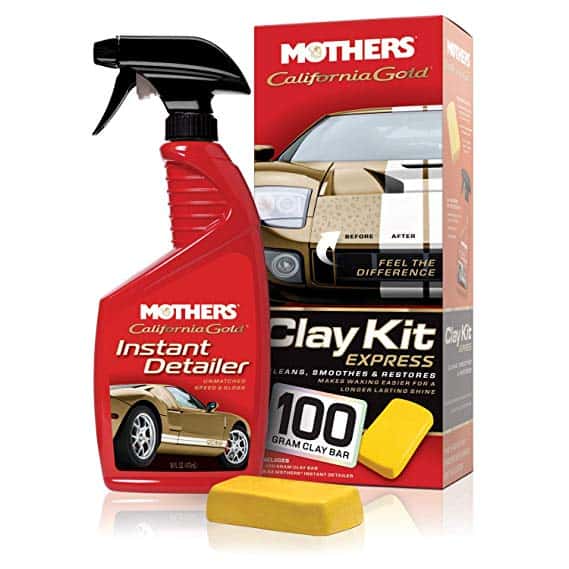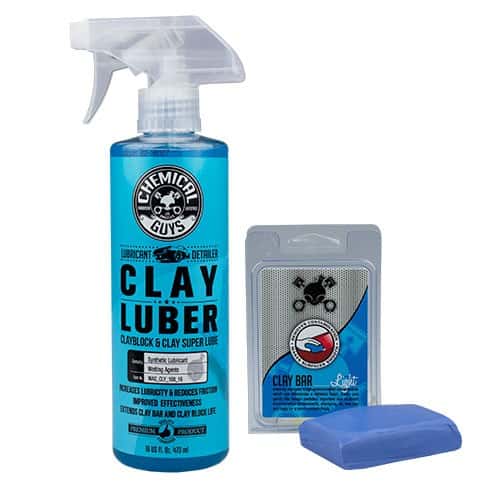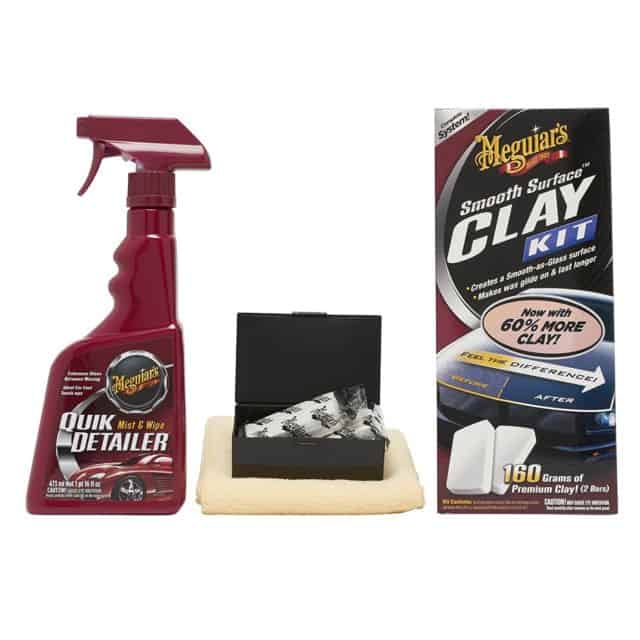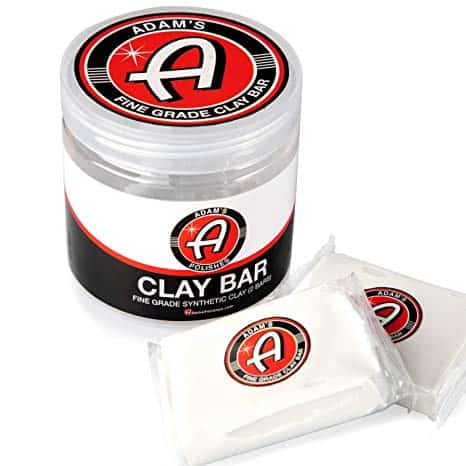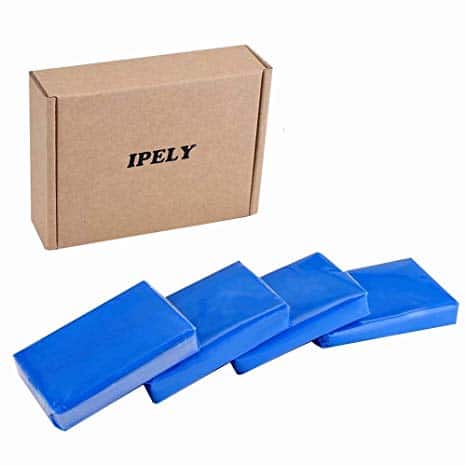Most everyone is familiar with the process of hand washing a car. You grab a bucket, some water, some soap, a nice sponge, and a hose, and after a little bit of elbow grease, you have a shiny and clean car, free of dirt and grime. And while we certainly advocate for washing your car regularly, there is a between cleaning your car and detailing it — which is where the best clay bars come into play.
The 10 Best Clay Bars For a Professional-Level Detail
If you have the budget for it, professional detailing is great and can greatly extend the life of your car. However, with the right supplies and knowledge, detailing can be done at home as well. Using a clay bar is one way to extend the life of your car’s paint by removing dirt and other contaminants that might get missed by washing or waxing.
A clay bar is the simplest way to remove bonded contaminants from paint including things like tree sap, bird droppings, and tar. These contaminants usually repel soap and water and can look like stains on an otherwise clean paint job. To get you started, we’ve outlined the ten best clay bars for you to detail your vehicle at home.
What To Look For When Purchasing The Best Clay Bar
If you’re new to detailing your car, clay bars and clay bar kits come with enough variety that you may find yourself confused when shopping for the first time. No need to worry though, you can narrow down the options by looking at just a couple of features:
Lubricant
Lubricant is necessary when using a clay bar on your vehicle. It prevents the clay from damaging the paint and allows it to pick up contaminants that repel water. Some brands recommend using water as a lubricant and others come with a spray or lubricant. Remember, distilled water won’t leave behind mineral residue, so it is recommended to use that instead of tap water.
Some kits come with their own lubricant. Other brands like Chemical Guys and Mothers make a detailing spray that works as a lubricant as well. Some sources suggest using soap and water as a lubricant, but use caution before taking this route. Some clay bars will break down when exposed to soap, reducing the effectiveness and life of the clay. Read the instructions on whatever clay bar you purchase to determine the best lubricant.
Hardness
The easiest way to differentiate between different clay bars is by looking at the hardness of the clay. Most clays come rated soft, medium, or hard. Soft clays are for particularly delicate surfaces and tend to be the most gentle to use. If you use a clay bar on your car multiple times a year, you should look at soft clays to avoid too much wear and tear on your paint and chrome pieces.
Medium clays are the most standard. This hardness is appropriate for just about any application, but if you are using a clay bar very often or using it on glass and chrome you should still consider using soft clay.
Hard clays are for applications that will take some elbow grease. If you bought a classic car that has never been detailed or if you parked your car under a tree that covered the car in sticky residue, then get a hard clay bar. These are specifically for removing aggressive bonded contaminants. A hard clay bar is also your best bet to get rid of baked-on brake dust.
Size & Shape
Clay doesn’t always come in a standard bar shape. Usually, clay is sold by weight, with 100 grams being the standard for one bar. It can be stored as a bar or in a jar. Jars keep the clay from drying out better than a bar, which is usually just wrapped in plastic.
DIY Detailing Is Easy With The Best Clay Bars
The key to any maintenance is consistency and attention to detail. Carpenters swear by the age-old advice of “measure twice, cut once” and this can also apply to detailing your vehicle. Read directions, take advice from the manufacturers of maintenance products, and do things the right way the first time to avoid having to redo processes over and over to get the results you want. These skills, along with patience and consistency, will pay dividends throughout the life of your vehicles.
Clay Bars: In Summary
Progressing from a simple wash and rinse to doing light detailing work at home is a great way for automotive enthusiasts to achieve great results without spending a ton of money. Using a clay bar in combination with waxing and polishing is a logical next step after washing your car at home with professional cleaning products, and will lead to painted surfaces and other finishes on the exterior of your vehicle lasting longer and looking better.
To expand your skillset even further, look into ways to treat trim pieces made of plastic and rubber at home, and then look into upkeep with your car’s interior. Beyond simple vacuuming, you can shampoo soft surfaces within the interior of your vehicle and treat plastic, leather, and vinyl with professional-level products to keep them from drying out or discoloring.
Frequently Asked Questions
How often should I use a clay bar?
For a daily driver, you can get away with yearly or bi-yearly clay bar and wax treatments. Follow it up with one of the best long-lasting waxes for additional protection.
What if I drop the clay?
Unfortunately, a clay bar is designed to stick to and soak up contaminants, so if you drop your clay bar, you should throw it away. Otherwise, any dirt, dust, or grime from the ground will stick to the clay and end up scuffing the surfaces you are treating.
Can I use a clay bar on glass and chrome?
Yes! But check the specifications of the particular brand of clay you are using. Some are not rated for glass and may be too harsh, leading to scratches that may make glass look foggy. This goes for headlight treatments as well. Softer clays tend to work better on delicate finishes.
Are there organic or natural options for clay bars?
Yes, but most of the options are made artificially. Organic clay bars are a boutique and high-end car product so expect to pay a premium price tag if you want that option. Most commercial clay bars are not made from real clay.
Can I use soap and water when I run out of lubricant?
Check the specifications of the clay bar you are using. Some will work with water and some can work with a mixture of soap and water. Some clay bars will break down when exposed to soap and this will hinder performance and lead to subpar results.
Can a clay bar remove scratches?
A clay bar itself cannot remove scratches. Clay bars are mainly used to remove bonded contaminants like tree sap or brake dust. You will need to buff and polish your paint in order to remove superficial scratches.

